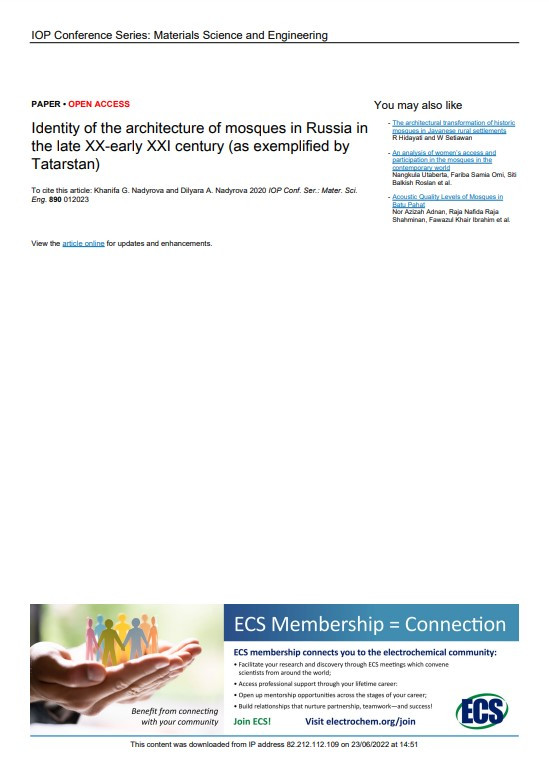
The article is devoted to the analysis of the development and identification of the architecture of mosques in Russia on the example of the Republic of Tatarstan. In the 1990-ies, after a long break, the construction of mosques in cities and villages was resumed. For the last three decades, the architecture of mosques has evolved from recreating historical buildings of mosques lost during the Soviet period to construction of modern Muslim cult structures. The architecture of the Tatarstan mosques in Russia develops compositions of the traditional types of the buildings while applying contemporary structures, materials, and extending the functions significantly. The buildings of the mosques include prayer rooms, libraries, museums, classrooms, conference rooms, auxiliary spaces, etc. A particular feature of the contemporary Tatar mosques is separate entrances and ladies’ prayer rooms. Previously, women were not allowed inside the buildings. All this determines the identity of the architecture of mosques in Tatarstan and Russia. The construction of large cult structures signifies a new stage for the development of mosques in Russia.
Nadyrova, Khanifa G., and Dilyara A. Nadyrova. “Identity of the architecture of mosques in Russia in the late XX-early XXI century (as exemplified by Tatarstan).” In IOP Conference Series: Materials Science and Engineering, vol. 890, no. 1, p. 012023. IOP Publishing, 2020.
I agree to the terms outlined below:
You agree to upload and assign Mosqpedia Database the rights to use the content worldwide and in perpetuity across all current and future media platforms. Mosqpedia Database may edit, copy, adapt and translate your contribution.
The content will be distributed under the Creative Commons Attribution-Deed – Attribution-NonCommercial-NoDerivatives 4.0 International – Creative Commons
All data will be stored in line with data protection regulations.